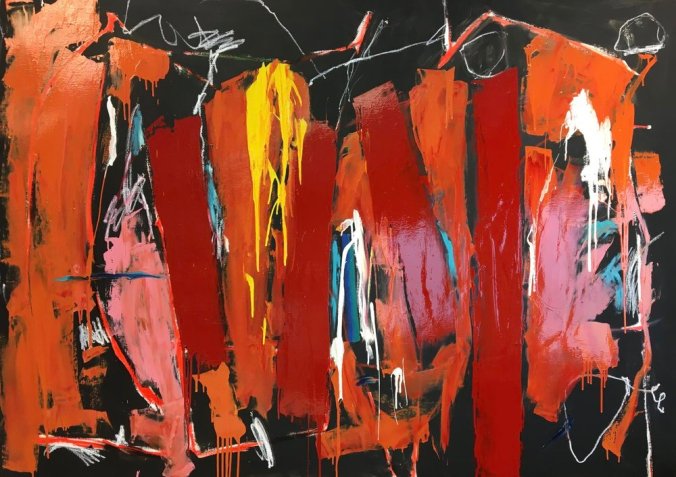
Centuries of Light
By Ron Evans
As I passed numerous stacks of apple bins, pallets and a small city of factory chimneys pumping out billowy man-made clouds, it struck me that this was an odd part of town to find the studio of renowned abstract painter Robert Wilson. The elegance and sophistication of the bulk of Wilson’s work seemed to be at odds with the stark industrial landscape he has surrounded himself with. However, as I chatted with Robert, it became clear that this might actually be the perfect environment for him to practice his particular brand of wizardry.
“I’m here everyday. This is my office. This is where I go to work. I did the whole ‘in-home studio’ thing for years but I much prefer being able to come to a separate location to work. I’m much more productive.”
In an industry where it’s not terribly uncommon to speak in ethereal or grandiose metaphor, Wilson seems a bit more grounded in an almost blue collar approach to his craft.
While he focuses on the abstract or “non-objectivism”, as he prefers it, he also firmly believes in the importance of simply being able to draw.
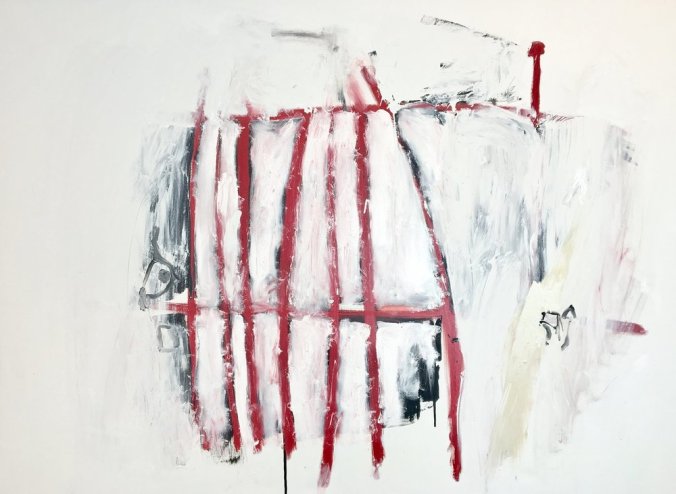
Future Structure
“It’s key to continue your growth with things like anatomy, landscapes or more finely rendered art. That’s where you learn control. You can tell by looking at a painting, no matter how abstract it is, if the artist has control. But not in the sense of illustration where you’re controlling every line and every shape. To me it’s about emotion. Am I conveying emotion? Abstract is very hard to do because it has to convey an emotion without a subject matter.”
Wilson had been creating figure drawings and landscapes in his earlier days as a Chicago high school student. That is, until the cover of a magazine changed the course of his creative output.
“I saw an issue of Time Magazine that was talking about painter Frank Stella. The pieces were quite abstract, just bold black and white lines. And I suddenly realized that art is about ideas. You can convey ideas through painting. And that took me to a whole new level of understanding of what art was all about.”
The evolution from realism to non-objectivism was an organic one, and Robert believes it can’t happen any other way, although he doesn’t consider the overall processes to be terribly different from one another.
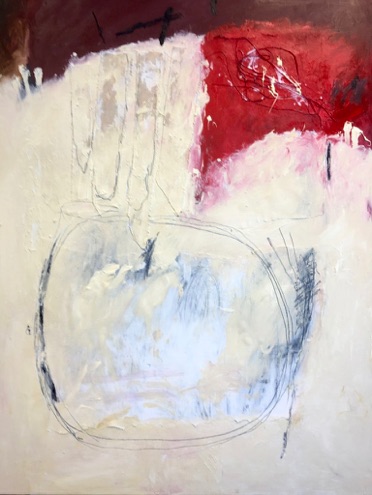
Hidden Mirror
“In a sense, all art is abstract. Even if you do a realistic painting you are abstracting from nature. You are taking from nature and shifting the colors and shapes into your painting.”
Robert will be a juror at the upcoming Abstract Sucks show at RadarStation in Wenatchee, along with fellow artist and juror, Alessandra Piro. The genesis of the show came from numerous conversations I have had with fellow artists about abstract. “It’s art for people who can’t draw” is a recurring phrase in these discussions and the show, in spite of the irreverent title, is an attempt to understand a key, but often polarizing, movement and genre of art through the process of doing, rather than looking. For many of the artists entering this show, this will be their first foray into the world of abstract.
Wilson’s key piece of advice for anyone looking to try their hand at abstract, or any new type of art form is simple. “If you want to be a good writer, you should read a lot. And if you want to be painter, look at a lot of art. If you want to paint a cat then paint a cat. But there has to be a sense of authenticity to it.” He does however caution against the Bob Ross-like ‘zen of painting’ and ‘everything is peaceful and easy’ approach to creativity. “I think it’s a real benefit to struggle. To find out who you are through your art. Really, you are re-defining yourself when you do a painting. The struggle, tension and sincerity. I look for these things in art.”
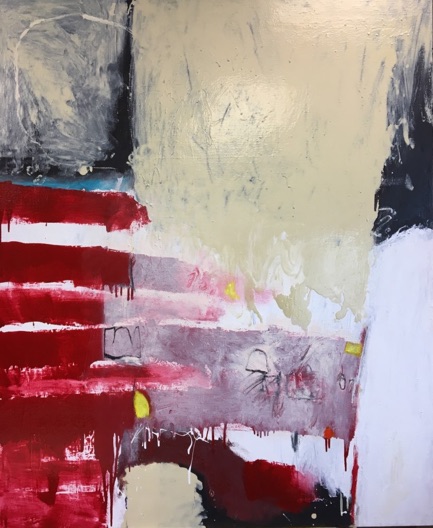
Revelation
This lesson may have come in part from Pacific Northwest painter Mark Tobey, the only living painter to have had a showing at the Louvre. “He was staying at a Zen monastery in the far east years ago when he was younger and the zen master brought him into a room with nothing but a floor mat and a painting on the wall. A dark circle had been roughly brushed onto rice paper and that’s all that there was to the painting. The zen master told Tobey to look at this painting and discover what it meant. ‘And when you have done that, come find me’. So Toby stared at this painting and initially thought ‘Well it’s the cosmos. No, that’s too easy.’ He basically spent days and days looking over this piece to figure out what it meant.
Finally, he went to find the zen master and told him ‘I give up. What is it all about?’ The zen master said ‘What you look for is the personality of the artist. If you can see the personality of the artist, you’re seeing a good painting.”
I told Robert that as he was sharing this story, I thought of the Far Side comic of a group of intellectual-looking people carefully studying a mop leaning on a wall at the Museum of Modern Art. In the next panel, a janitor grabs the mop, leaving the group staring at the wall. There may be value in both of these examples but the notion of mysticism mingled with bewilderment plays a large role in the disconnect from abstract for many artists and art enthusiasts. Call it ego, anxiety of simply ignorance, but many of us feel a certain “is this a joke?” type of knee-jerk response to certain pieces of abstract art. I, myself, have at many times felt that the creator of a piece I’m standing in front of is around the corner with his buddies giggling and whispering “Oh my God, he’s actually looking at it!”. Egos and exaggerations aside, Wilson himself runs into this response to art from time to time. “I question the validity of a lot of contemporary art. Are future generations going to enjoy this piece? Are they going to see something unique about our civilization? But then I just keep going until something strikes me and I find it exciting again.”
Wilson stresses encouragement over criticism as a rule. “You never want to criticize or put down the artist. Encouragement is always the best medicine to develop good artists. There should never be any snobbery. I’m involved with the Two Rivers Gallery and there you have beginners and more established artists all together. This is a good thing. There’s always something to learn.”
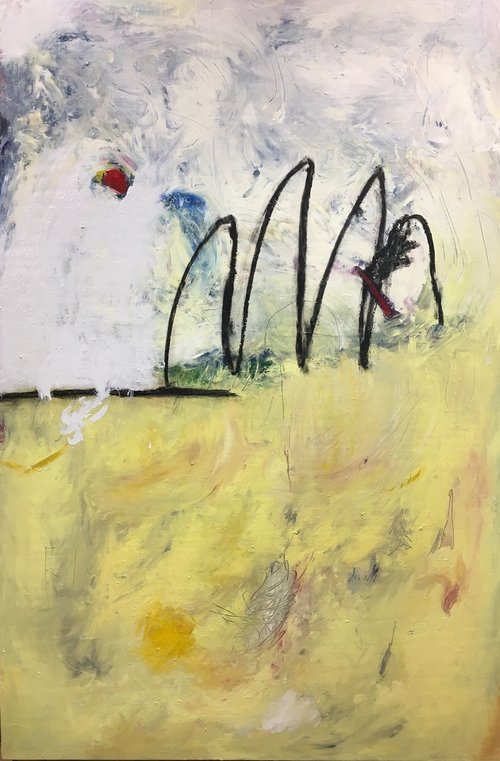
Song and Cycle
On the topic of learning, Robert did most of his outside of school. “I took art classes at the University of Washington as well as evening classes at the Edison Technical School which I prefered because it was a lot more free. But ultimately I found things were moving too slowly so I dropped out. And that was the extent of my formal education. But my education goes on today on the internet, especially Instagram. These are great sources to look at new contemporary art.” Wilson acknowledges the continued importance of galleries but feels that Instagram is one of the best things to happen to artists. “Collectors can come right to the artist. Galleries are limited by geographic access. But if I put something on the internet, Saudi Arabia can see it.“
Exposure, convenience and eliminating the middleman for art deals aren’t the only things the internet has brought, however. Theft, piracy and an overwhelming deluge of content, style and quality are also more prevalent now than ever. In a world where you can constantly scroll through past and current art of all genres until you are bleary-eyed, I often wonder if we have seen it all. I asked Robert if he thought we may be approaching an “it’s all been done before” scenario where there is little to no real territory left to discover in the world of tangible art. Without hesitation his eyes lit up, he leaned back in his chair as if glancing into a crystal ball and replied “I think we haven’t even begun to touch the possibilities of where art can take us.”
Abstract Sucks opens to the public Friday, December 1 at 5 p.m. There will be a Q&A with Robert beginning around 7:30 p.m. This event is free.